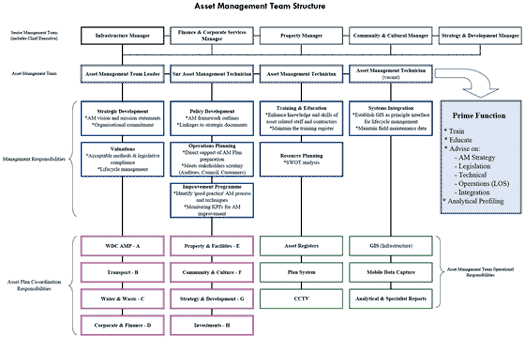Case study 3.2
Wanganui District Council – A structured approach to planning makes the best use of the limited resources that councils outside the big cities have to work with
Wanganui District Council has identified 25 service areas that are supported, to a greater or lesser extent, by assets. To co-ordinate its activities across all these service areas, the Council is developing a planning framework comprising:
- a council-wide asset management plan prepared by the Asset Management Team and adopted by elected members – this will give an executive summary of the issues across all asset groups, supported by the summaries from the service-level plans;
- detailed asset management plans for each of the 25 service areas, prepared by the activity managers, approved by the Asset Management Team, and endorsed by the Senior Management Team; and
- information systems (which support the above plans) administered by the Asset Management Team, comprising asset registers, condition and performance ratings, Geographical Information System, mobile data capture, and an “as-built” plan system.
This structure ensures that there are clear arrangements for co-ordinating asset management planning across the range of differing council services, and that there is a consistent and planned approach across the multitude of functions and activities.
There is a clear management structure establishing responsibility for asset management plans. Activity managers produce these plans, with support from members of the asset management team. There are clearly demarcated roles with job descriptions in place setting out the asset management team’s role to co-ordinate, support, train, and analyse.

This approach helps the Council ensure that ownership of planning is retained at service level, while making best use of the limited asset management specialists available.
